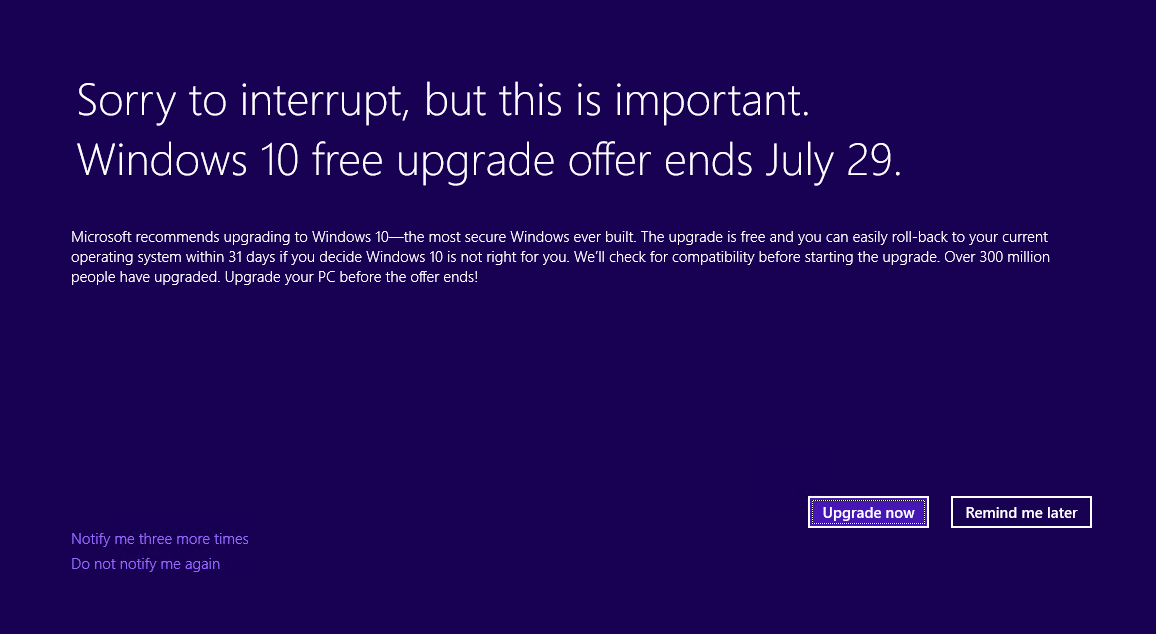One More Time: Get Windows 10 notification
Microsoft's free upgrade offer to Windows 10 ends on July 29, 2016 and will not be renewed at that time.
The company pushed Windows 10 on devices running Windows 7 and Windows 8.1 in different ways throughout the past eleven months since release.
First, it offered Windows 10 as an upgrade that users had to reserve to get. Later on, it used iterations of the Get Windows 10 App to push the upgrade often aggressively on user system.
From sneaky prompts to prompts that left users no choice, and now in the last 30 days a prompt with a clear decline option. Since Microsoft pushed Get Windows 10 in various iterations on devices over and over again, it almost felt like malware that users could not get rid of.
Sorry to interrupt
With one month to go, Microsoft makes one last attempt to get users to upgrade their devices to Windows 10 (under KB3173040).
Users on Windows 7 with Service Pack 1 or Windows 8.1 may get a full-screen notification that informs them about the end of the free upgrade period.

It reads:
Sorry to interrupt, but this is important.
Windows 10 free upgrade offer ends July 29.
Microsoft recommends upgrading to Windows 10 -- the most secure Windows ever built. The upgrade is free and you can easily roll-back to your current operating system within 31 days if you device Windows 10 is not right for you.
We'll check for compatibility before starting the upgrade. Over 300 million people have upgraded. Upgrade your PC before the offer ends.
The full-screen notifications displays several options. First, users can hit the upgrade now button to start the upgrade process right away. Alternatively, they may hit on remind the later to get another notification three days later.
There is also a "do not notify me again" option, and another notification option to get three more notifications about the upgrade.
You are probably wondering who gets the notification. Microsoft notes that it only appears if the following conditions are not true:
- A recent version of the Get Windows 10 app is installed.
- The user selected "do not notify me again"
- The computer is not compatible with Windows 10.
- Windows 10 was uninstalled after an upgrade (roll-back).
- A Windows 10 installation failed and the old operating system was restored.
- The Get Windows 10 app notification is hidden.
- The Windows 10 upgrade was disabled, or blocked through the Registry.
The main target for the notification is a new Windows 7 or 8.1 installation. Most devices that run the operating systems for a while should either have the latest version of the Get Windows 10 app installed, blocked it, or blocked the upgrade to Windows 10.
This is however not the case for new installations of Windows 7 or 8.1, and those appear to be the main target for the notification.
Still, the notification may be displayed on devices running those older versions of Windows for a longer period of time already.
This article was first seen on ComTek's "TekBits" Technology News

- Log in to post comments